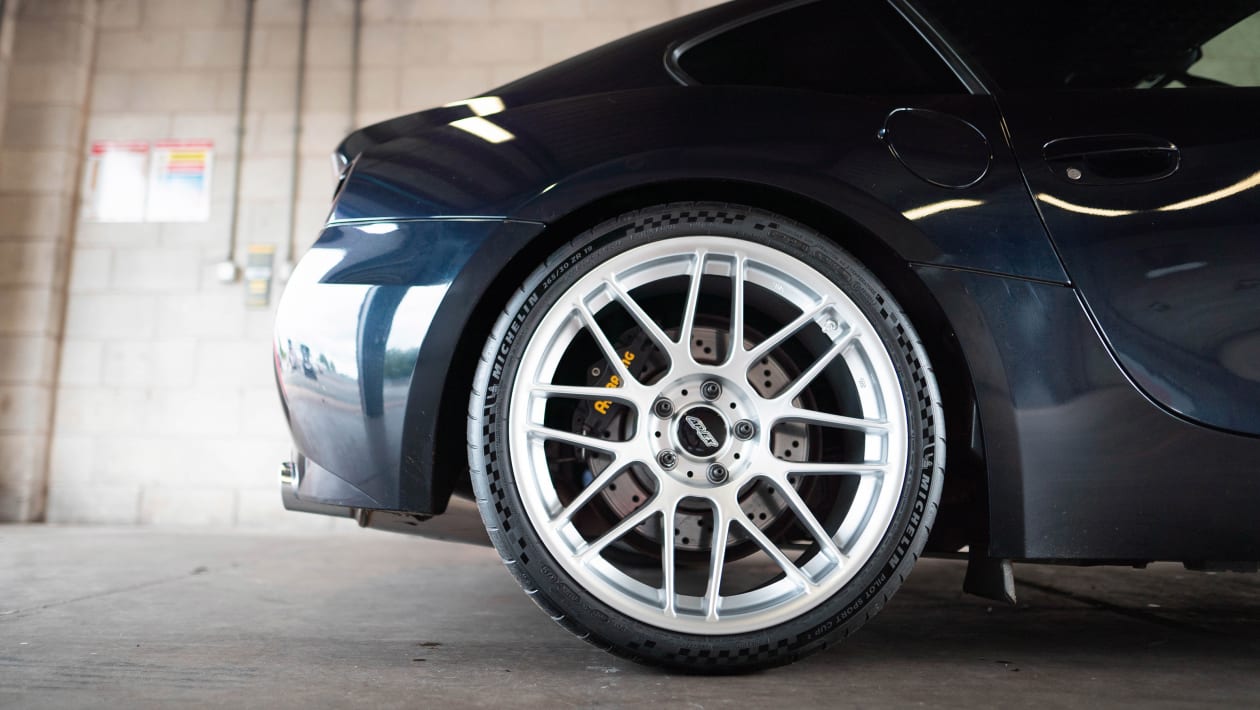All Categories
Featured
Table of Contents
The Michelin used a comfortable driving experience, qualified by responsive guiding and a modern understeer equilibrium. Despite the cooler testing problems, Michelin's constant time and grasp over three laps indicates its suitability for real-world applications. Alternatively, Yokohama's efficiency was distinct. While its super-quick steering led to a quick front axle turn, the back showed a tendency to swing much more.
The tire's first lap was a second slower than the second, aiming to a temperature-related hold rise. For day-to-day use, the Michelin may be a more secure bet.
Honest Tyre Care Near Me (Brabham WA)
It shared Michelin's safe understeer equilibrium but did not have the latter's readiness to turn. Continental and Goodyear's efficiencies were remarkable, with Continental's brand-new PremiumContact 7 revealing a significant enhancement in damp problems compared to its predecessor, the PC6. This model was far much less sensitive to load changes and behaved similar to the Michelin, albeit with a little less interaction at the restriction.
It integrated the secure understeer balance of the Michelin and Continental with some sporty handling, proving both predictable and quick. As an all-rounder for this Golf GTI, Goodyear's Crooked array was the standout, showing impressive efficiency in the damp. Finally, the Bridgestone Potenza Sporting activity took the crown as the fastest tyre, albeit by a small margin.
Motorists seeking an interesting wet drive might find this tyre worth considering. The standout performer in damp braking was the latest tyre on test, the PremiumContact 7, though the results are nuanced.
Top Tyre Sales
Ideally, we wanted the cool temperature level test to be at around 5-7C, but logistical delays meant we examined with an average air temperature level of 8C and water at 12C. While this was cooler than typical test conditions, it was still warmer than real-world problems. The warm temperature examination was done at an average of 18C air and 19C water.
The 3rd run entailed wet braking examinations on used tires, specifically those machined to 2mm with a tiny altercation. While we planned to do more with these used tyres, weather condition restrictions limited our testing. However, it deserves keeping in mind that damp braking is most important at the used state, as tires usually enhance in dry problems as they use.

Bridgestone, Goodyear, and Michelin saw the least efficiency decrease when put on. The Hankook tire signed up the tiniest efficiency drop as temperature levels cooled down, yet it was among the most impacted when worn.
Leading Tyre Tuning – Swan
The take-home message below is that no solitary tire succeeded in all elements of damp braking, indicating a complex interaction of factors affecting tyre performance under different problems. There was a standout tire in aquaplaning, the Continental finished top in both straight and rounded aquaplaning, with the Michelin and Goodyear likewise great in much deeper water.

Yokohama could gain from a little more grasp, an issue possibly affected by the cooler conditions. When it comes to dealing with, all tyres done within a 2% range on the lap, demonstrating their top quality efficiency (Tyre packages). Nonetheless, considering these tyres essentially target the very same customer, it's interesting to observe the significant distinctions in feel.
The shock is due to the fact that the PremiumContact 6 was among my favourites for stylish dry drives, yet its successor, the PremiumContact 7, appears elder and resembles Michelin's efficiency. Among these, Hankook was the least specific in steering and interaction at the restriction. Tyre offers. Both Michelin and Continental offered beautiful preliminary steering, albeit not the fastest
If I were to advise a tire for a rapid lap to a novice, say my papa, it would be one of these. We have the 'enjoyable' tyres, namely Yokohama and Bridgestone. Both were speedy to guide and felt sportier than the others, yet the trade-off is a much more playful rear end, making them a lot more difficult to deal with.
Tyre Checks (Brabham WA)
It supplied similar guiding to Bridgestone but offered far better responses at the limit and better hold. The Bridgestone Potenza Sport, nevertheless, appeared to degrade fairly swiftly after just three laps on this demanding circuit. There's Goodyear, which placed itself somewhere in between the enjoyable tires and those tending in the direction of understeer.
All in all, these tyres are exceptional entertainers. In terms of tyre wear, the technique made use of in this test is what the market refers to as the 'gold requirement' of wear.
Both the Bridgestone and Yokohama tyres significantly underperformed in comparison to the other four tires in terms of rolling resistance, with Continental slightly exceeding the remainder. Concerning the convenience level of the tires, as anticipated, many demonstrated an inverted relationship with handling. The Continental, Michelin, and Goodyear tires performed finest across numerous surface types tested.

Bridgestone started to show indicators of firmness, while Yokohama was specifically jarring over gaps. We did determine inner noise degrees; nevertheless, as is usually the instance, the results were very closely matched, and due to weather restrictions, we were unable to perform a subjective analysis of the tires noise. Ultimately, we checked out abrasion figures, which determine the quantity of tyre walk lost per kilometre, normalised to a one-tonne vehicle.
Tyre Warranty Near Me – Brabham WA
This number stands for the amount of rubber dust your tyres generate while driving. Michelin led in this classification, generating over 9% less rubber particulate matter. On the other hand, Hankook produced 32% even more. This is an element I think the industry needs to concentrate on even more in the future, and it's something Michelin is advocating.
Latest Posts
Reliable Cheap Tyres ( Swan)
Trusted Discount Car Tyres Near Me (Dayton)
Tyre Repair Services